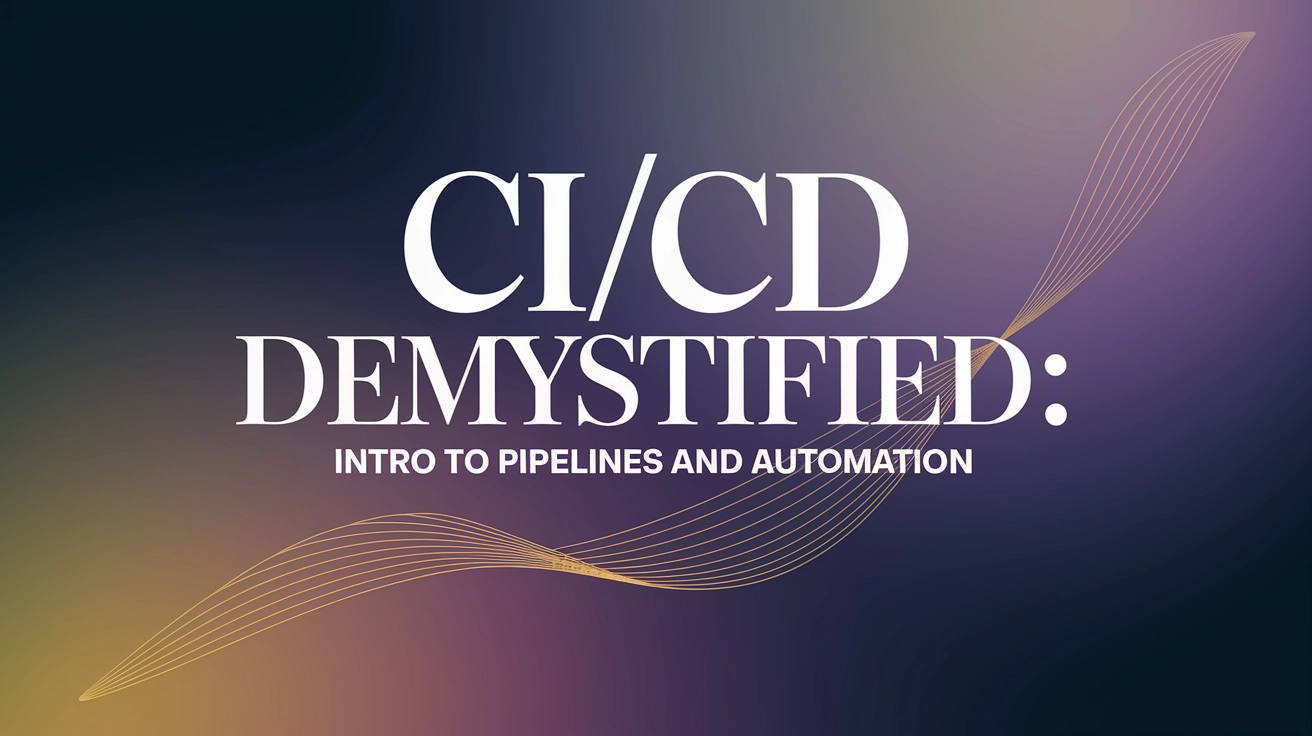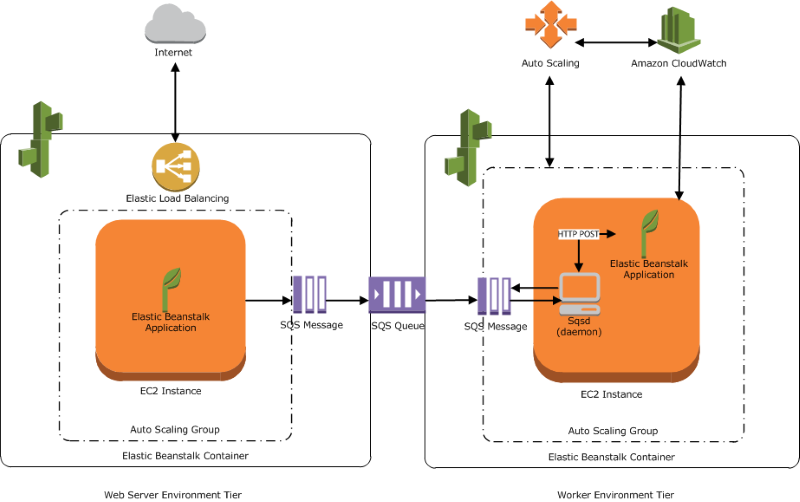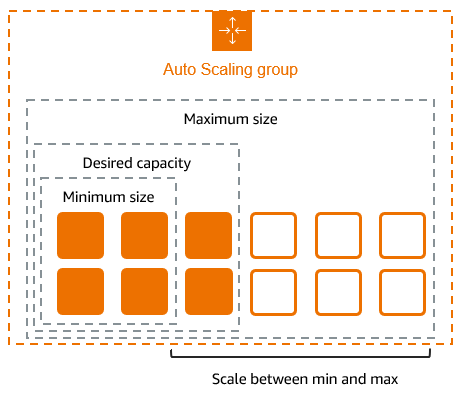Breaking Down the CI/CD Magic
Hey there, DevOps enthusiasts! Welcome to the second post in our DevOps From Scratch series. Last time, we explored what DevOps is all about. Today, we're diving into one of its most powerful concepts: CI/CD pipelines.
If you've been around software development, you've probably heard people throwing around terms like "CI/CD," "pipelines," and "automated deployments" like they're everyday conversation (which, in DevOps circles, they are!). But what exactly do these terms mean, and why should you care?
What Is CI/CD Anyway?
CI/CD stands for Continuous Integration and Continuous Delivery (or Deployment). Don't let the technical jargon intimidate you—at its heart, CI/CD is simply about making software development faster, more reliable, and less stressful.
Let's break it down:
Continuous Integration (CI)
Remember those days when developers would work in isolation for weeks, then struggle to merge their code together? That's the problem CI solves.
Continuous Integration means frequently merging code changes into a shared repository, where automated builds and tests verify each change. Instead of waiting until the end of a development cycle to integrate code (hello, merge conflicts!), CI encourages developers to integrate several times a day.
Think of it like this: rather than building an entire puzzle separately and then trying to force the pieces together at the end, you're regularly checking that your pieces fit with everyone else's.
Continuous Delivery (CD)
Once your code passes all the automated tests in CI, Continuous Delivery ensures it's always in a deployable state. This means your code is ready to go to production at any time, but you still make the final call on when to deploy.
Continuous Deployment (CD)
Taking it one step further, Continuous Deployment automatically releases every change that passes all stages of your production pipeline to your customers. No human intervention needed—just pure automation magic.

Anatomy of a CI/CD Pipeline
A CI/CD pipeline is like a factory assembly line for your code. Just as raw materials enter a factory and finished products come out the other end, your code enters the pipeline and production-ready software emerges.
Here's what happens at each stage:
1. Source Stage
Everything starts with code. Developers commit their changes to a version control system like Git. This triggers the pipeline.
2. Build Stage
The code is compiled, dependencies are gathered, and everything is packaged together. If you're working with compiled languages like Java or C#, this is where your source code transforms into executable binaries.
For interpreted languages like Python or JavaScript, this might involve packaging dependencies or creating containers.
3. Test Stage
Now comes the quality control—automated tests ensure your code works as expected:
- Unit tests check individual components
- Integration tests verify components work together
- End-to-end tests simulate real user interactions
- Security scans look for vulnerabilities
- Code quality checks enforce coding standards
4. Deploy Stage
If all tests pass, your code is deployed to a staging environment that mimics production. This gives you a chance to perform final validations.
5. Production Stage
In Continuous Deployment, changes automatically go to production after passing the staging environment. With Continuous Delivery, there's a manual approval step before deployment.

CI/CD in Action: A Real-World Example
Let's walk through a typical scenario:
-
9:00 AM: Sarah, a developer, finishes coding a new feature and pushes her changes to the team's Git repository.
-
9:01 AM: The CI server (like Jenkins, GitLab CI, or GitHub Actions) detects the change and automatically starts the pipeline.
-
9:02 AM: The build stage compiles the code and creates artifacts.
-
9:05 AM: Automated tests run, checking that Sarah's feature works and doesn't break existing functionality.
-
9:15 AM: All tests pass! The code is automatically deployed to a staging environment.
-
9:30 AM: After quick verification in staging, the team approves the deployment to production.
-
9:35 AM: The new feature is live for users.
What used to take days or weeks now happens in less than an hour. That's the power of CI/CD.
Getting Started with CI/CD: Tools of the Trade
Ready to set up your first CI/CD pipeline? Here are some popular tools to consider:
CI/CD Platforms
- Jenkins: The OG of CI/CD. Open-source, highly customizable, with a vast plugin ecosystem.
- GitHub Actions: Built into GitHub, making it super easy to set up if you're already using GitHub.
- GitLab CI/CD: Integrated into GitLab with a user-friendly interface.
- CircleCI: Cloud-based CI/CD that's quick to set up.
- AWS CodePipeline: Native CI/CD for AWS environments.
- Azure DevOps: Microsoft's end-to-end DevOps solution.
Container Technologies
- Docker: Package your application and dependencies into standardized containers.
- Kubernetes: Orchestrate and manage those containers at scale.
Infrastructure as Code
- Terraform: Define your infrastructure in code for consistent deployments.
- Ansible: Automate configuration management.
- CloudFormation: AWS-specific infrastructure as code.
The Business Case: Why CI/CD Matters
CI/CD isn't just a technical nice-to-have—it delivers real business benefits:
1. Faster Time to Market
By automating the delivery process, new features reach customers in hours instead of weeks.
2. Higher Quality Software
Automated testing catches bugs early, before they affect users.
3. Reduced Deployment Risk
Small, frequent changes are easier to troubleshoot than massive updates.
4. Better Developer Experience
Developers get quick feedback on their code and spend less time on manual, repetitive tasks.
5. Improved Customer Satisfaction
Faster bug fixes and feature releases mean happier users.

Common CI/CD Challenges (and How to Overcome Them)
Like any powerful approach, CI/CD comes with its challenges:
Challenge 1: Test Flakiness
Problem: Inconsistent test results can erode trust in your pipeline.
Solution: Identify and fix flaky tests, and implement retry mechanisms for intermittent failures.
Challenge 2: Long Build Times
Problem: As your codebase grows, pipelines can become slow.
Solution: Implement parallel testing, caching, and incremental builds. Consider splitting monolithic applications into microservices.
Challenge 3: Environment Consistency
Problem: Code works in one environment but fails in another.
Solution: Use containers like Docker to ensure consistency across environments.
Challenge 4: Cultural Resistance
Problem: Teams used to traditional development methods may resist change.
Solution: Start small, demonstrate wins, and provide training and support.
Best Practices for CI/CD Success
To get the most from your CI/CD implementation:
-
Start simple: Begin with basic CI before moving to full CD.
-
Shift left: Move testing earlier in the development process.
-
Keep builds fast: Aim for under 10 minutes for feedback.
-
Fail fast: Stop the pipeline as soon as a critical issue is detected.
-
Use feature flags: Decouple deployment from feature release to reduce risk.
-
Monitor everything: Track both your pipeline performance and application health.
-
Treat infrastructure as code: Version control your infrastructure alongside your application code.
Conclusion: The Journey to Automation
CI/CD pipelines represent a fundamental shift in how software is built and delivered. By automating repetitive tasks, they free developers to focus on what matters most: creating valuable features for users.
Remember, implementing CI/CD is a journey, not a destination. Start small, learn from each step, and gradually expand your automation.
In our next post, we'll get hands-on with Git for version control—a foundational skill for any CI/CD workflow. Until then, happy automating!
This post is part of our "DevOps From Scratch" series. Check out the DevOps Horizon blog for more educational content!





3 Comments
[…] you've been following our series on Docker containers and CI/CD pipelines, IaC is the missing piece that ties everything together in modern […]
[…] post is part of our DevOps Mastery series. Don't miss our previous posts on CI/CD fundamentals and configuration […]
[…] to dive deeper into DevOps concepts? Check out our guide to CI/CD pipelines or learn about Docker Compose for multi-service […]